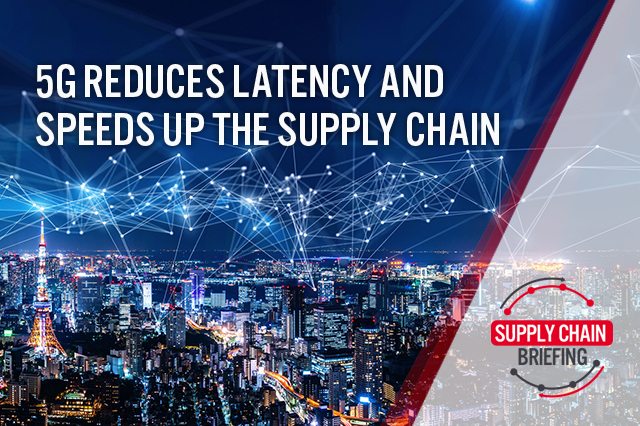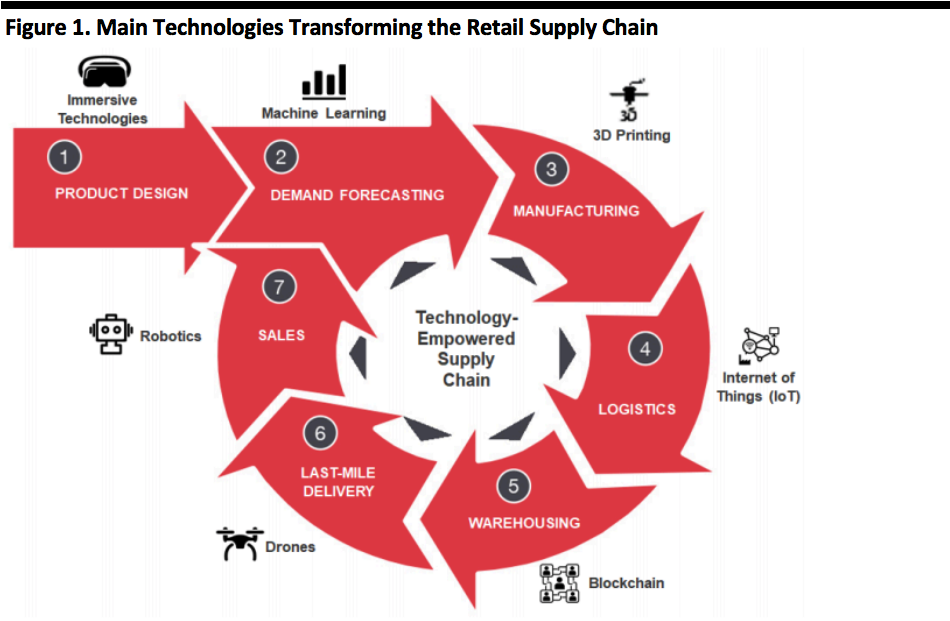
albert Chan
 Source: Coresight Research[/caption]
Source: Coresight Research[/caption]
What Is 5G? 5G technology is the fifth generation of mobile connectivity, which succeeds 4G. 5G can offer peak speeds of 10–20Gb/s, and latency (the time between command and related action) can be reduced to less than 1 millisecond. 5G can also connect one million devices per square kilometer.
Compared with previous generations, 5G offers a number of advantages:
- Lower latency, enabling faster transmission of larger data streams.
- More reliability, enabling better transmission of data in extreme conditions.
- A greater degree of flexibility than Wi-Fi and the ability to support a wider range of devices, sensors and wearables.
- Lower energy consumption.
5G’s Importance to the Supply Chain 5G can improve supply chain operations by allowing more data to flow more quickly. This results in better visibility throughout the supply chain, which enables retailers to make quicker decisions based on the available data and thus leads to increased efficiency and reduced costs.
Furthermore, due to its lower latency and higher reliability over previous-generation mobile connectivity, 5G enables technologies that help companies streamline their own supply chains, such as autonomous vehicles, 3D printing and reality technologies, for example.
5G Technology Benefits the Retail Supply Chain by Empowering IoT Solutions By delivering reduced latency, improved computing and a digital infrastructure, 5G facilitates mass adoption of the Internet of Things (IoT). It supports up to one million IoT sensors within a square kilometer at high speeds. This means a large number of sensors can transmit data at the same time, and that more devices can be connected and interact with each other as part of a network.
5G Can Speed Production and Logistics
5G can greatly improve connectivity between machines and systems, cutting costs and optimizing processes. An entire production plant connected through a unified 5G network can be managed and controlled more simply. A large network of IoT sensors supported by 5G also supports predictive machine maintenance.
In logistics, 5G’s low latency and greater bandwidth enable manufacturers to identify and track goods in real time to ensure they are sent when and where required.
5G Facilitates Automated Warehousing
5G connectivity offers enhanced automation in warehouses. Currently, autonomous vehicles tend to follow rigid, designated paths when moving around to perform various tasks, but the highly precise location tracking enabled by 5G will improve the navigation of these devices. The speed of 5G connectivity will also substantially reduce the reaction time of the robots for more efficient operations.
Warehouses can leverage 5G signals to build centrally controlled data networks through which more precise data can be transmitted even faster, reducing the complexity and cost of connectivity.
5G Can Improve Customers’ Shopping Experiences The enhanced mobile connectivity that 5G provides should enable retailers to make best use of many other emerging technologies such as artificial intelligence and machine learning, as well as augmented reality (AR) and virtual reality (VR). 5G will improve the quality of content available through AR and VR, making it possible for in-store shoppers to experience the technology simultaneously with other shoppers, for example. Retailers could leverage 5G-enabled services to provide more targeted and customized shopper experience.
Key Insights 5G promises many benefits, including lower latency, higher reliability and greater energy efficiency than previous generations, enabling faster data transfer for improved efficiency and a better customer experience. As 5G becomes more affordable over time, we will see more organizations adopt the technology to streamline operations throughout the supply chain.